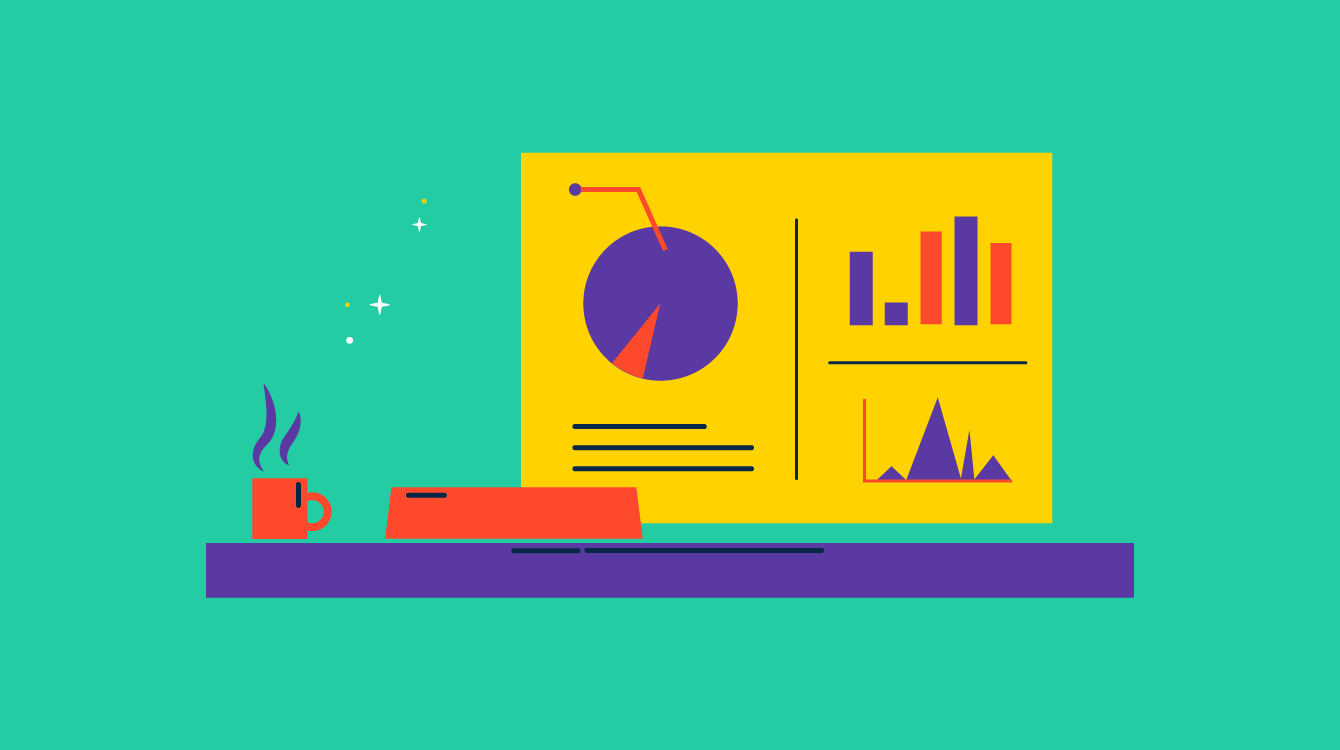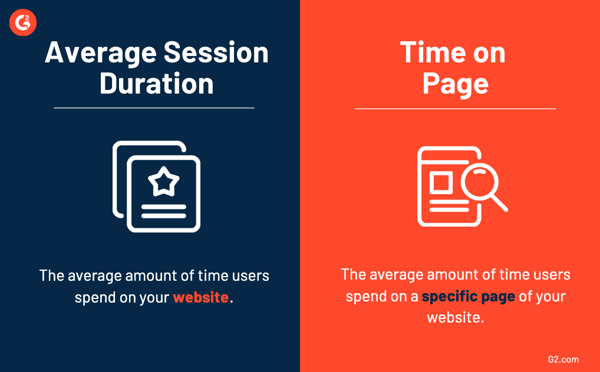June 11, 2024
 by Daniella Alscher / June 11, 2024
by Daniella Alscher / June 11, 2024

For some people, marketing is just a word. For others, it is an aspiration to beat all the odds.
Businesses usually measure success via marketing metrics. While some businesses track marketing metrics like cost per acquisition (CPA) or cost per lead (CPL) budget, others track success rates, lead conversions and renewals.
Analyzing these actionable marketing metrics through marketing analytics software makes the process of adding, optimizing, and managing marketing metrics a breeze. It also builds more visibility, influence, and, consequently, return on investment (ROI).
Let's swim across the Suez Canal of marketing metrics and figure out which metrics work best for your business and what can be improved.
Marketing metrics are actionable metrics that B2B or B2C industries keep track of to evaluate the performance of their below-the-line (BTL) or digital marketing campaigns and content marketing efforts. The hierarchy of marketing metrics is designed to evaluate content results at the grassroots and step up to analyze traffic value, average cost per click (CPC), pay per click (PPC), keyword bids, cost of acquisition, and cost of lead generation.
B2B and B2C companies target distinct marketing metrics, depending on their marketing spends, key performance indicators, growth areas, V2MOM strategic goals, and customer satisfaction levers. The end goal, however, is what resonates with every enterprise; return on investment (ROI) and brand recognition.
Marketing metrics should measure a company's marketing strategy. They are a clear representation of the performance, quality, and investment ability of an organization of any size. Now, as new-age marketing analytics tools have been launched, segmenting big data into actionable marketing metrics and vanity metrics is more doable and feasible.
Let's look at what metrics businesses can track and how they tie back to their revenue goals.
The question you should ask at this stage is: what audience segment am I trying to reach out to, and have I identified their wants and desires with full accuracy?
Marketing metrics help gauge the intent of your audience through actionable numbers. It also informs you about the right marketing channels and search queries to invest in. Imagine you are a low-fat yogurt company and start a paid newsletter target campaign that consists of articles on cancer prevention. Most readers will bounce, leaving you with zero registrations or, worse, zero impressions.
It is important to align with your customer data and the demand curve and integrate it backward into your product shelf. With marketing metrics, you can analyze whether your efforts are targeted towards the right consumer base. It helps you research the market, assess the location-wise impact and optimize market spends. Forcing a connection with your audience will not get you anywhere. The key is to go through the literature on brand activation, and track your progress with actionable tools to improve audience interaction.
Tracking the right internet marketing metrics (performance metrics, keyword metrics, or analytical metrics) also helps you allocate market spends wisely. When you sit down to make a marketing calendar or budget, this data helps distribute your dollars to any paid or free marketing initiative that your teams work on tirelessly. From global widget creation to the launch of product trailers and teasers to opt-in product notifications to email campaigns, every market campaign comes with a price. Or rather, comes with a marketing metric.
Marketing metrics can be classified into two buckets: actionable and vanity. It is important to stay attentive to the progress of current marketing projects. Looking at the data reports that your teams have worked on could help you determine what projects you should pursue to achieve the decided marketing metrics.
Actionable marketing metrics are data points that directly inform decision-making and strategy adjustments, such as conversion rates and customer acquisition costs. Vanity metrics, on the other hand, look impressive but don't provide insights for action, like total page views or social media followers. Actionable metrics drive meaningful changes; vanity metrics often just boost morale. Understanding the difference helps focus on metrics that improve business outcomes.
Consumer acquisition is a joint effort of marketing, sales, design, and development teams that strive together and work with midnight oil to achieve the following results for the organization. Let's look which marketing metrics directly impact these consumer touchpoints.
Website traffic metrics are some of the most important metrics for your team to track. The more traffic you receive, the better your chance of making a sale. Marketers tracking these metrics may create materials like landing pages, website copy, blog posts, and downloadables that provide value to prospects, leads, and new and existing customers.
This document the complete number of visits your website receives. This number should be growing steadily, and it’s important to pay attention to any trends you see over time. For example, if around the same time you release a new campaign, you notice your site visits plummet, it might be time to call a meeting and identify any problems.
If the time period around that campaign instead shows an extreme increase in visits, it could be helpful to take a look at what made that campaign different from others. This number should be reported on a monthly basis.
Example: 150,000 viewers/total views/total page visits.
This number documents the number of individuals who visit your website. A person who visits your site multiple times will only be counted once.
This number indicates overall awareness of your site, but beware of tracking this number as a hard metric; cookies are specific to browser and device, meaning that if someone visits your site on Safari, Chrome, Firefox, and their mobile browser, they’ll be counted as a new unique visitor each time. This number should be reported on a monthly basis.
Example: 10,000 unique visitors on site.
This market metric gives you and your team an idea of how popular a particular page is. The higher the number of views on a specific page, the more important it is to compare that page to others and note the differences so that you can continue to create more pages that will be equally as successful. This number should be reported on a monthly basis.
Example: 1,100 views/page impressions
Keeping an eye on customer retention metric can give insight into quite a few things. Watching the number of returning visitors, for example, can indicate the interest that marketing qualified leads (MQLs) are taking in your product or service or the usability of your website. An MQL is someone who has indicated interest in your brand based on your team's marketing efforts. Therefore, the number of new visitors can help your team determine brand awareness.
Example: 15% retention
Monitoring this number keeps you and your team in the know about how well your call-to-action buttons are working. The call to actions (CTAs) should be designed to ask for the reader to take action, which can help you further determine who may be a marketing qualified lead and bring them further into the funnel.
Example: 5% conversion rate.
This is the length of all site visits combined on your domain. Tracking this metric helps contribute to the determination of how engaged a user is on your site. Because this number is an average, it’s important to note any extremes that take place that could skew your number.
Example: 3 minutes
Discovering how much time people are spending on a unique page can help your team gather information about how to move forward in creating other pages. If viewers aren’t staying on the page very long, it might be indicative of the quality of content on your page. If viewers are staying on a page for a long time, it could mean the same thing. Understanding the correlation between time spent on a page and the quality of content can help you and your team build better content in the future.
Example: 5 minutes
While both of these measure digital marketing effectiveness of a campaign or website KPIs, they are relevant under different fonts. 
This metric gives your team an idea of how effectively you’re keeping your viewers engaged with your content. The better your content, design, and internal linking, the longer they’ll stick around. This should be reported on a weekly basis.
Example: 12 minutes
Bounce rate refers to the number of people who immediately leave the first page they land on your website as a new visitor. This could be due to a number of things: poor user experience, slow load time, or simply uninteresting content. Taking the time to understand the cause of a high bounce rate could be tedious, but if you’re noticing it across multiple pieces, finding the answer to that question could be worth it in the long run. A page bounce rate in the range of 26 to 40 percent is considered excellent.
Example: 30% bounce rate
This number is used to measure the percentage of visitors that exit from your website after multiple sessions. Tracking this metric can lead you and your team to determine which pages have a high exit rate and, further, attempt to determine why that is and make the changes necessary to lower that number.
Example: 10% exit rate
The time your team invests in creating the gated assets may be well worth it, but you won’t know unless you measure this metric. Keeping track of the interest your viewers have in learning more about a topic can help you decide what kind of assets are most effective, if your content is engaging enough for readers to want more, or if your audience is looking for something different.
Example: 57 downloads
Although it would be nice for customers to remain loyal for an eternity, this doesn’t always happen. Over time, customers will eventually drop off, and it’s important to keep track of the rate at which they’re doing so. To find this number, divide customers lost in a given time period over your total number of customers, multiplied times one hundred. This should be reported on a quarterly basis.
Example: 2.5% loss/turnover

Great email content with the right call-to-actions can drive a high amount of traffic to your website. The success of your email marketing campaigns can be measured in the following ways:
While you may be sending your newsletter to hundreds, if not thousands of your subscribers, your open rate will tell you how many subscribers actually took the time to open that message. Open rates can help give email marketers an insight to how well their subject line copy is doing. A high open rate percentage means you’re doing something right.
Example: 25% open rate
The email bounce rate will measure the amount of email addresses that didn’t receive your email.
Tracking bounce rates against open rates will give email marketers a better idea of the quality of their subscriber list.
The benchmark for bounced emails is less than 2%.

Your newsletters should have links that prompt readers to click through in order to read or learn more about a subject. The higher the click-through rate, the more enticing your copy is to your readers. Making your CTAs stand out with color or even a button can help increase this rate in order to bring more visitors to your website or blog.
Example: 2.5% CTR
A high number of unsubscribes can feel like harsh criticism, but it’s important to look at that number with optimism. Unsubscribes aren’t necessarily a bad thing – unsubscribes weed out the people who aren’t interested in your content, but that only helps shed light on those who are.
Example: 0.5% unsubscribe rate
Measuring your overall return on investment for your campaigns should be a no-brainer metric for email marketers. This can be measured by determining the money made from your campaign in sales, divided by what you spent, and then multiplying by 100.
Tip: Interested in learning more? Check out these must-read email marketing statistics.
Tracking the percentage of new subscribers your newsletter gains can indicate the overall growth of your email list as well as display any significant trends or spikes that occurred. Noticing these trends can help email marketers take the next steps in analyzing the type of content they released those days, how they promoted their newsletter, and so on. This number should be measured on a daily basis.
Example: 5% subscription rate, week over week
Social media marketing is a matter of sharing ideas, articles, videos, and other types of content with a community of people who support your business. Below are some of the ways that you can measure social media marketing success.
Social media metrics are vital to track and benchmark in order to gauge your marketing effectiveness. Note that it’s important to check these metrics for as many platforms as your brand is present on, such as LinkedIn, Facebook, and Twitter.
Engagement rate is a broad umbrella term that essentially comes down to how much an audience is interacting with your account. The way an engagement metric is measured will vary by team, but it is often an average of metrics such as likes, comments, and shares, as well as account mentions.
Example: 2.3 % engagement rate
A measure of the total number of unique people who see your content. Reach should be used as the denominator in your social media measurement equations to contextualize the effectiveness of your social media strategy.
Example: 30,000 potential reach
This is the amount of times your content will appear in a social feed. This number grows regardless of whether viewers click, comment, or engage in any other way with your post. This metric should be tracked if you’re concerned with overwhelming or underwhelming your audience with your advertisement. Flooding their feed can put your brand in a negative light, while rarely appearing in their feed may not put your brand in any light at all.
Example: 50,000 potential reach

This measures the amount of new followers your company’s social account accumulates in a given period of time. Keep an eye on this as you release new marketing campaigns, use new hashtags, and participate in social media events like Twitter chats.
If you notice no growth or even a loss in followers, action should be taken to improve the situation.
Note: While tracking your followers can be exciting, this metric is also sometimes considered a vanity metric.
Measuring the rate at which your followers grow can help your team better understand how successful some of your campaigns are. These are people who both can and have said they want to see what your company is posting.
Example: 3% follower growth rate
Social media is great for creating a brand presence, but it should also be working to drive organic traffic to your website. Measuring the amount of traffic that is coming from your social media accounts can be a great talking point when reporting to managers. This is another actionable social media metric that you can keep track of and work towards building a better reach of your social following.
Building a list of these mentions and where they appear can help you determine the exposure your brand is getting. It’s not a bad idea to keep track of your competitors and where they’re being mentioned – if a source mentions them, they’re probably willing to mention you as well.
Your blog’s success can be measured in more than one way. While page visits and button clicks are nice, taking a look at how your pages are performing in comparison to others along the same line can help teams determine their future content marketing strategy and how to improve their already-existing content. Below are some of the ways that you can measure SEO:
Determining where your page ranks for the keyword it is attempting to rank for can give you insight into optimization opportunities for on-page SEO techniques. Measuring this metric demonstrates the effectiveness and prominence of your website on Google. It’s well known that many people won’t go past page one of Google to find what they’re looking for.
Example: Position 9
Counting backlinks you earn from others helps you keep track of how valuable others are finding your content. Earning links from pages with a high domain authority will boost your SEO efforts, while those with low domain authority (like spam sites) may harm those efforts.
Example: 342 backlinks and 100 referring domains
Monitoring your domain’s authority measures the trustworthiness of your page. This number is measured on a scale of N/A to 100, and is influenced by the amount of external links that refer to your page and domain authority of those external links. The higher your authority, the more trusted your site is by Google.
Tip: The domain authority of your page can be found with the use of SEO software.
Traffic sources refer to how users are finding their way to your website or blog. A well-designed website and marketing strategy will have a mix of traffic sources, not just one channel. These sources are often broken down into four sections:
There are several things that someone in SEO can do to measure this metric, but regardless of the individual ways, page speed should be high on the priority list. Humans are impatient, and a slow load speed of your site can have a domino effect on the entire company. Keeping note of things like your web page size, time to first byte, and the time to full page load is imperative to your success with site speed optimization.
Example: 3 seconds
Banner ads, social media ads, and other advertising efforts need to be measured just as carefully as the organic results you’re getting. Below are some of the ways you can determine whether what you’re spending is worthwhile:
For those who partake in paid advertising, a CTR measures the amount of clicks your ad receives divided by the amount of views your ad receives. CTRs are generally low, but that doesn’t mean that you shouldn’t try to prevent that. Using alternative ad copy, different designs, and providing better offers are all things that could improve that rate.
Example: 3% CTR
If you’re doing an ad campaign, measuring the cost per click (CPC) measures how much your company pays on average every time someone clicks on your ad. Doing further research to see what the average CPC is in your industry may give you a better idea of how to bid in the present, and how to shift in the future.
Example: $0.80
This will measure how cost-effective your campaigns are in regards to attaining new leads for your sales teams. This metric will help your team determine how much to spend on campaigns in the future as well as give insight to your return on marketing investment.
Example: If a startup spent $10,000 dollars on a social media traffic ad and received 200 registrations, the CPL is $50.
Just because you’re receiving thousands of views on an article doesn’t mean that each person is considered a marketing qualified lead (MQL). Determining this number can be done in several different ways.
Look at the number of people signing up for demos on your landing pages, who is subscribing to your email newsletter, taking one of your courses, or downloading an asset. Those are the people who are more likely to be interested in your product or service.
While digital marketing can pull quite a few leads for you, hosting events is just another way to pull in new leads, determine how interested those leads are, and how loyal your customers are. Below are some of the ways you can measure the success of your event marketing efforts.
Keeping track of the total amount of people registered for your event is a must. Comparing the event attendance to the total amount of registrants is an extremely important statistic, but this can’t be done without collecting the number of registrants first. Additionally, keeping track of the different types of tickets you sell and their amounts can help you get a better understanding of your audience for future events.
Example: 300 registrants
Although you may have gotten 1000+ responses to your event, it’s important to measure the exact amount of people who checked in. Comparing those two numbers can help your team spot an unusual difference: why are people being lost between registration and check-in? If your event takes place over multiple days, be sure to measure this number by each individual date so that you can cross-check with other metrics accordingly.
Example: 276 attendees
Tracking mentions on social media means keeping note of when users directly call out your brand, either by handle or the unique hashtag you promote. Tracking these mentions will help you better understand how socially active your attendees are and how socially friendly your event was so that you can improve for next year.
Example: 456 mentions
Sending out a survey soon after your event takes place provides your team with the opportunity to collect information regarding their satisfaction with the event. When writing your post-event survey, know that the more questions with which you provide numeric response options, the better, as it will provide you and your team with more raw data to present to stakeholders.
Survey abandonment: In addition to measuring the satisfaction people experience from your event from a survey, it’s also important to measure the amount of people who took the time to complete the survey, versus those who began and never completed it. Taking a closer look at the length of your survey and the format of your questions may help you in the future if your abandonment rate is high.
Sending out a survey to those who attended your event to get a feel for how likely they are to recommend it to others. A net promoter score is based on a scale from 1-10, where scores of 9-10 are considered promoters, and scores of 0-6 are considered detractors. Subtracting the percentage of detractors from the percentage of promoters indicates the value your event brought to your attendees.

One of the most important key indicators of your event’s success is the amount of money you made from the event. Comparing this amount to your initial goals will help you set goals for future events.
Gross revenue won’t be very helpful until it’s compared to the cost of the event. Using this ratio helps teams understand the amount of profit or loss that was generated, and how to improve in the future.
Implementing promo codes with tracking links can help your team understand how people heard about your event and what type of people register. Creating promo codes can help you and your team gather more specific data for stakeholders to show what sorts of people registered for your event and from where.
Example: $450.00
Some events may be set up to encourage prospects to attend and engage with your sales team. If your event is set up for this, it’s important to actually track the number of qualified leads that walk through the door. Your company likely has specific criteria for what makes a lead, so be sure that the profiles you’re counting fit those criteria.
Example: 26 leads
After counting leads from your event, it makes the most sense to follow those leads along the funnel and determine how many of them become customers. Because of the many ways that a lead can move through the funnel, it’s important to state that the source of the lead is the event.
Example: 4 customers acquired
Ensure you stay on track with the actionable metrics that are pivotal to your team's and overall organization's marketing growth by choosing the best marketing analytics software with advanced reporting and performance tracking features in 2024.
HubSpot Marketing Hub is a comprehensive marketing software that offers features like email marketing, social media management, SEO tools, lead generation, analytics, marketing automation, landing pages, and CRM integration. It helps businesses attract, engage, and delight customers, driving growth and enhancing marketing efficiency.
What users like best:
"Hubspot marketing and sales integration capabilities. Their product has developed extensively over the last 3 years and I can create a seamless marketing and sales flow that helps marketing identify positive and negative outreach whilst also creating an efficient and easy to use process for the sales team."
– HubSpot Marketing Hub Review, Emily C.
"The large jumps in price between the tiers are frustrating. As a SMB, I don't want to pay thousands of dollars a month for a specific feature in the enterprise level.
HubSpot has hundreds of features, including several hidden gems, but feature requests can take a long time to develop."
– HubSpot Marketing Hub Review, Perryn O.
Mailchimp is an all-in-one marketing platform featuring email marketing, automation, landing pages, audience segmentation, CRM, social media management, analytics, and A/B testing. It empowers businesses to design campaigns, engage customers, and drive growth through data-driven insights and comprehensive marketing tools.
What users like best:
"Mailchimp is definitely splendind in terms of automating and optimizing email-marketing. It has intuitive and user-friendly interface. It allows me to personalize the templates based on audience's behavior and previous interactions. Its analytics and reporting tools allow me to track numbers and make marketing decisions based on it."
– Mailchimp All-in-One Marketing Platform Review, Siddhant G.
"It doesn't seem to natively work well with my Wix platform and I'm not fond of the popups. That could be improved. I would also like the ability to send browse abandonment emails."
– Mailchimp All-in-One Marketing Platform, Cooper A.
SEMrush is a powerful digital marketing tool offering SEO, PPC, keyword research, competitive analysis, content marketing, social media management, and analytics. It helps businesses optimize their online presence, track performance, and outsmart competitors with comprehensive data insights and strategic marketing solutions.
What users like best:
"Semrush is the best tool I have used for SEO. It offers with various features like on-page & Tech SEO, Keyword research, competitive research, Link Building everything in details. I like most how they are giving the detail analysis of keywords, positions tracking. I can easily get to know which Keywords my competitiors are working on thriugh Keyword gap. Backlink analytics report will help to get information on the lost/broken links also.
Moreover, Semrush is giving end-to-end solutions for my website SEO."
– Semrush Review, Brandy G.
"The only downside of the tool is its hefty pricing, which might be an issue for small businesses."
– Semrush Review, Ankit V.
CleverTap is a robust customer engagement and retention platform featuring marketing analytics metrics, personalized messaging, omnichannel marketing, A/B testing, user segmentation, push notifications, in-app messaging, and real-time insights. It helps businesses enhance customer experiences, drive engagement, and increase retention through data-driven, personalized marketing strategies.
What users like best:
"For starters like us, what I appreciate most about CleverTap is how 1. It is easy to use and adopt (very user friendly) and 2. how the Clevertap support team is there to make sure our organization can get better and better."
– Clevertap Review, Gelain Muriel R.
"Some of CleverTap's features take a bit too much time to be deployed in Production, but at the same time, it is best to deploy something bug-free and late rather than with bugs and early."
– Clevertap Review, Anirban D.
5. Google Cloud BigQuery
Google Cloud BigQuery is a scalable, serverless data warehouse offering real-time analytics, machine learning integration, SQL queries, data import/export, and data visualization. It enables businesses to analyze vast datasets quickly, gain actionable insights, and drive informed decision-making with its powerful and flexible data processing capabilities.
"Because of its ease of applying chatbots, composing words to be read, and easy integration into Flutter. Another advantage is that it's dialogflow free so I don't have to worry about costs. For BigQuery, the usage is very easy, the coding is also easy, and the output is very clear."
– Google Cloud BigQuery Review, Wadi W.
"The pricing model is a bit stressful - I always worry I'm spending too much money when I'm querying (even though we do have automatic controls on to cut people off at a certain amount)."
– Google Cloud BigQuery Review, Diana B.
We’ve talked a lot about the importance of numbers in marketing to measure creativity, but it’s also important to apply that creativity to the numbers. Understanding that not all metrics are measured equally and that not all metrics carry the same weight as others is important when trying to present results accurately.
Starting anew as a marketer and feeling the fire razing all around? To start with, learn how to build you can leverage marketing strategies to increase the organic traffic to your website.
Daniella Alscher is a Brand Designer for G2. When she's not reading or writing, she's spending time with her dog, watching a true crime documentary on Netflix, or trying to learn something completely new. (she/her/hers)
Email marketing is probably the most effective channel in terms of ROI.
 by Komal Helyer
by Komal Helyer
By the time you finish reading this, thousands of digital marketing campaigns will have been...
 by Ninisha Pradhan
by Ninisha Pradhan
Marketers love data.
 by Daniella Alscher
by Daniella Alscher
Email marketing is probably the most effective channel in terms of ROI.
 by Komal Helyer
by Komal Helyer
By the time you finish reading this, thousands of digital marketing campaigns will have been...
 by Ninisha Pradhan
by Ninisha Pradhan


